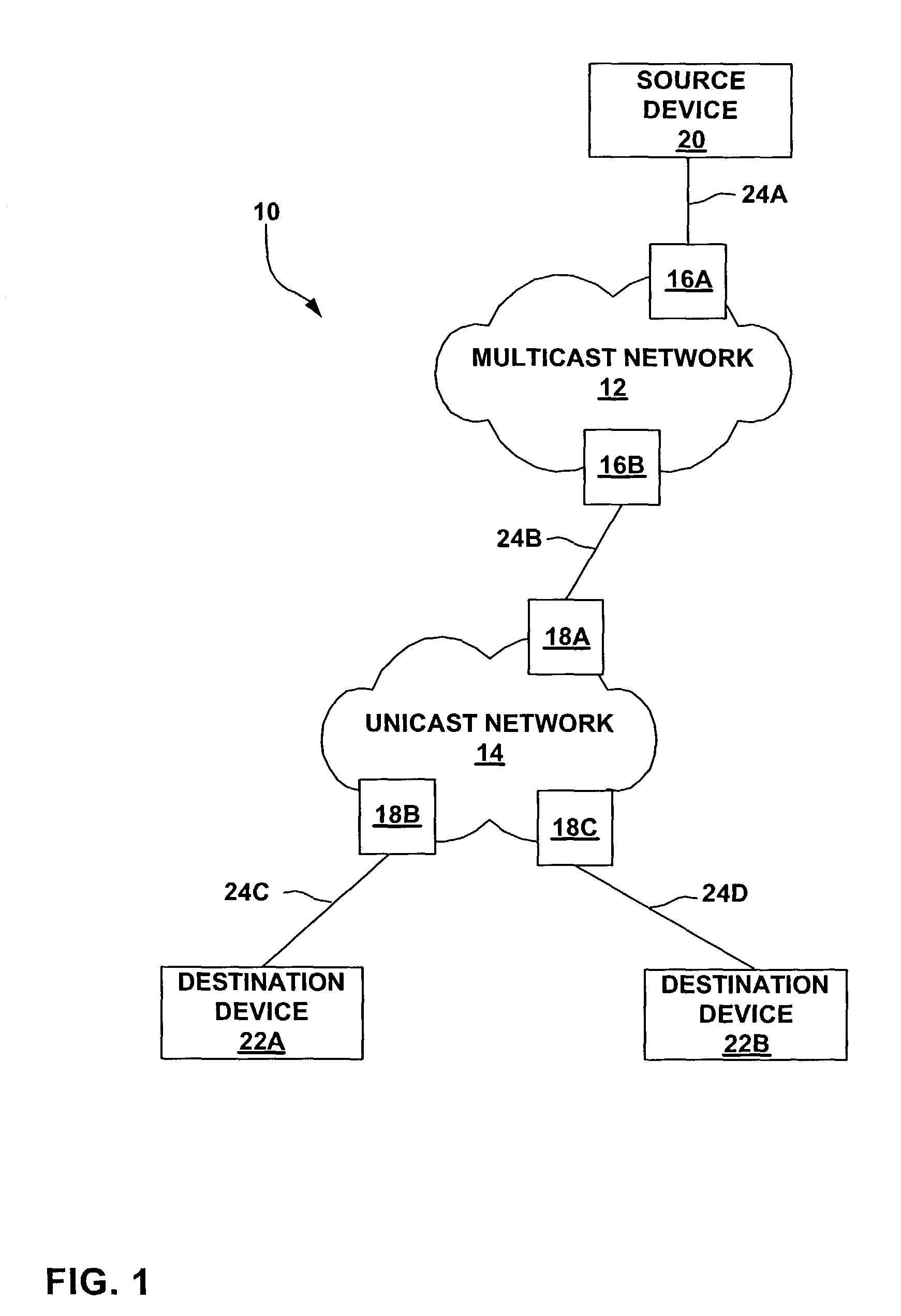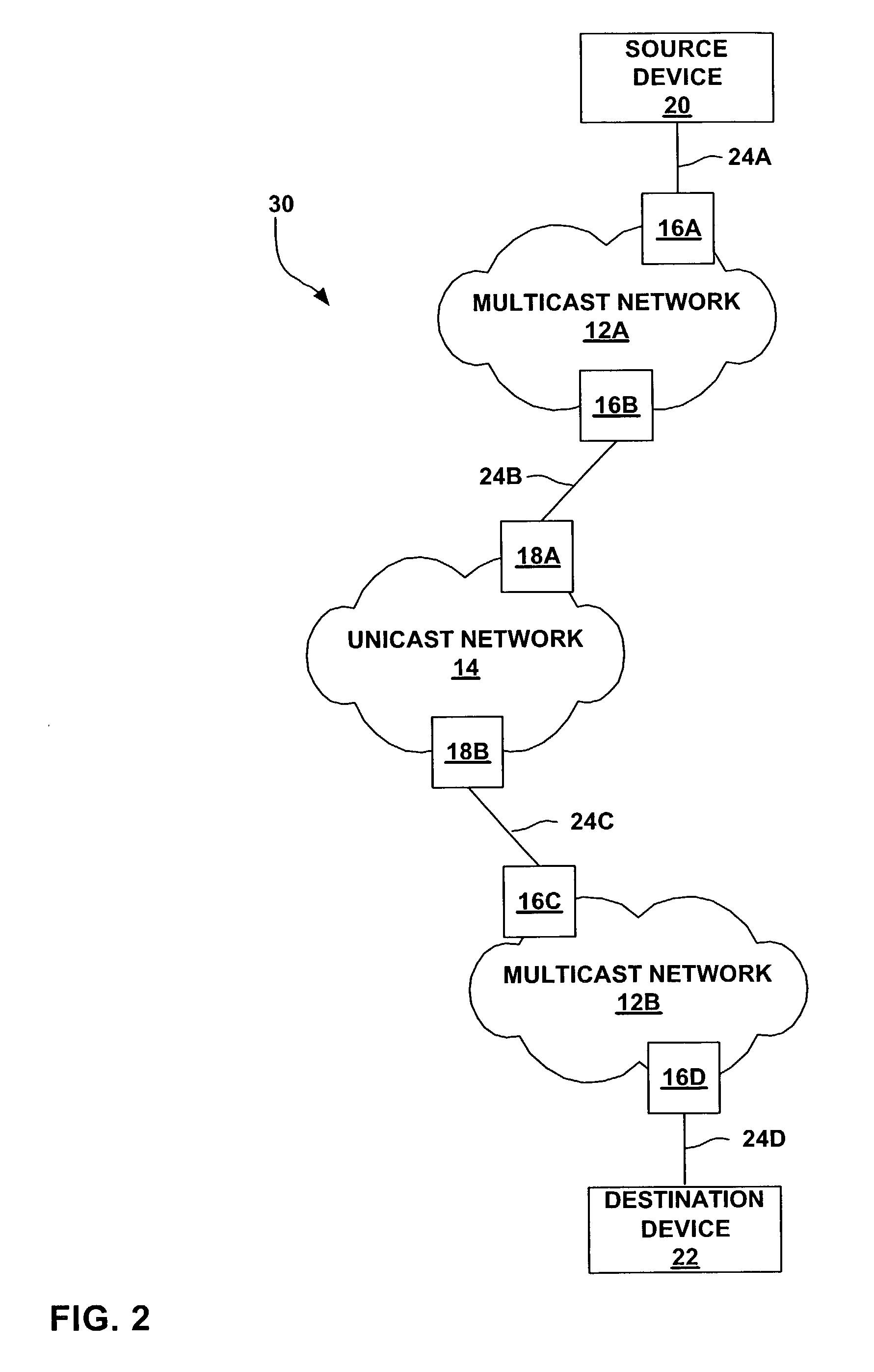Delivering and receiving multicast content across a unicast network
a multicast and unicast technology, applied in the field of computer networks, can solve the problems of increasing processing and memory resources, content providers incurring increased costs, and parts of the destination device not being able to receive multicast packets using existing multicasting protocols, so as to reduce costs
- Summary
- Abstract
- Description
- Claims
- Application Information
AI Technical Summary
Benefits of technology
Problems solved by technology
Method used
Image
Examples
Embodiment Construction
[0027]FIG. 1 is a block diagram illustrating an example computer network 10 that supports delivery and reception of multicast content across a unicast network 14 consistent with the principles of the invention. As shown in FIG. 1, computer network 10 includes a multicast network 12 and unicast network 14. Multicast network 12 includes multicast-enabled routers 16A and 16B (multicast-enabled routers 16). Unicast network 14 includes unicast routers 18A, 18B and 18C (unicast routers 18). Multicast network 12 may include any number of multicast-enabled routers 16, and unicast network 14 may include any number of unicast routers 18. However, for ease of illustration, only multicast-enabled routers 16A and 16B and unicast routers 18A-18C are shown in FIG. 1.
[0028]A source device 20 accesses multicast network 12 via link 24A and multicast-enabled router 16A. At the boundary between multicast network 12 and unicast network 14, multicast-enabled router 16B and unicast router 18A are connecte...
PUM
 Login to View More
Login to View More Abstract
Description
Claims
Application Information
 Login to View More
Login to View More - R&D
- Intellectual Property
- Life Sciences
- Materials
- Tech Scout
- Unparalleled Data Quality
- Higher Quality Content
- 60% Fewer Hallucinations
Browse by: Latest US Patents, China's latest patents, Technical Efficacy Thesaurus, Application Domain, Technology Topic, Popular Technical Reports.
© 2025 PatSnap. All rights reserved.Legal|Privacy policy|Modern Slavery Act Transparency Statement|Sitemap|About US| Contact US: help@patsnap.com



